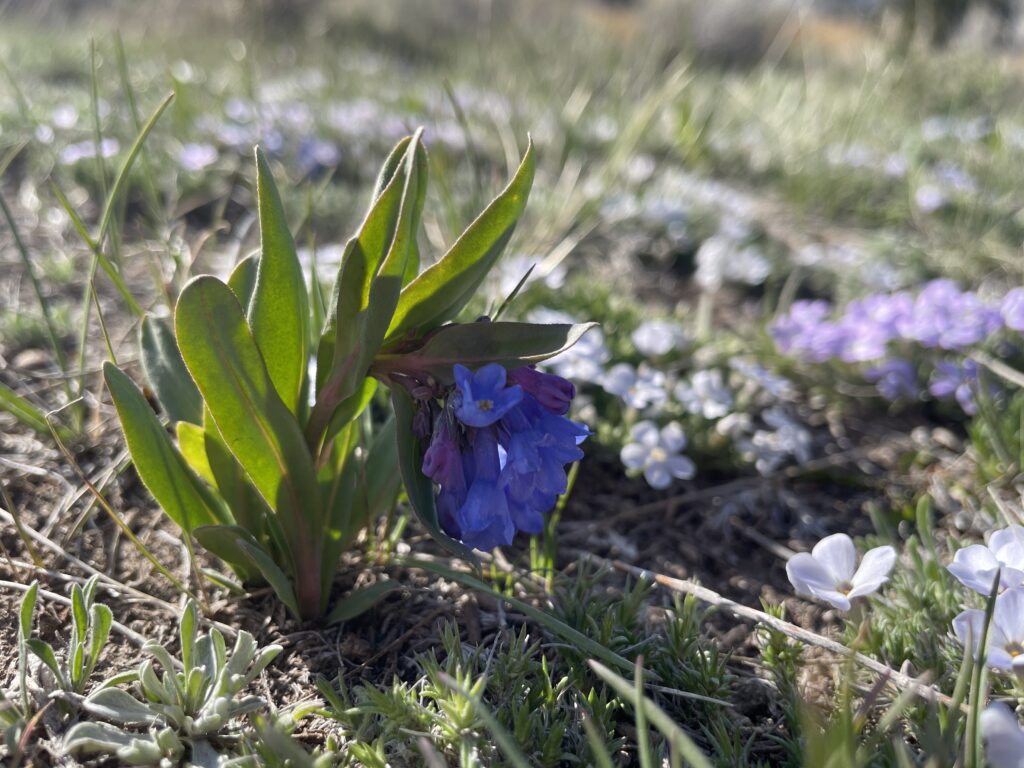Written & Photographed by Jessamyn Biette, Program Coordinator – Service
After a long winter, color is finally beginning to return to the valley—appearing first as leaf buds and early-season wildflowers. These fresh pops of color are welcome signs that longer and warmer days are on their way to Jackson Hole.
As an amateur naturalist, nothing brings me more joy than spotting the first wildflowers of the season. Having lived in the valley for six years now, I’ve developed a deep sense of sentimentality for these early spring sightings. Let’s walk through some of the wildflowers I’ve seen over the past few weeks—many of which are among the most likely to bloom this time of year.
And I want to note – most of what I know about the timing of these seasonal changes comes from one of my favorite books: For Everything There is a Season by Frank C. Craighead, Jr. During the spring of 2020, when the world slowed down, I found purpose in tracking the weekly rhythms of nature, just as Craighead did. I’ve carried that habit with me ever since.
My Early-Season Favorites
Three wildflowers that signify the arrival of spring for me are Turkey Peas (Orogenia linearifolia), Sagebrush Buttercup (Ranunculus glaberrimus), and Steer’s Head (Dicentra uniflora). All three can be found in rocky, gravelly soils right at the snowline. They are some of the first blossoms to appear in the sagebrush as the snow begins to melt.
Sagebrush Buttercup is perhaps the easiest to spot. Its bright yellow petals stand in stark contrast to the brown ground and melting snow, often catching your eye before anything else does.
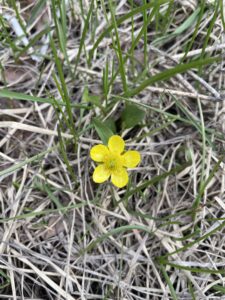
Sagebrush Buttercup (Ranunculus glaberrimus)
Ranunculaceae – Buttercup Family
As we often say at Teton Science Schools, “the more you look, the more you see.” Once you spot a buttercup, take a moment to pause and look more closely—there are likely other tiny wonders nearby.
One of these might be Turkey Peas, also known as Indian potato. These delicate white flowers grow in low clumps and are part of the carrot family. Small and unassuming, they reward the attentive observer.
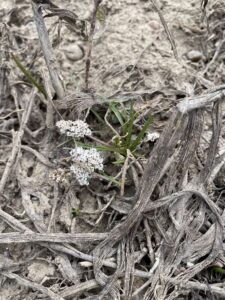
Turkey Pea/Great Basin Indian Potato (Orogenia linearifolia)
Apiaceae – Carrot Family
Then there’s Steer’s Head, arguably the most showy – yet subtle, of the early-season wildflowers. Named for its resemblance to a steer’s skull, it features small pinkish-white flowers in the bleeding heart family. These grow low—only 1–2 inches off the ground—and are easy to miss unless you’re really looking. If you’re lucky enough to spot one, stop for a moment and take it in.
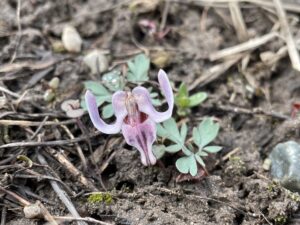
Steer’s Head (Dicentra uniflora)
Papaveraceae – Poppy Family
What else is out there?
While sagebrush buttercup, turkey peas, and steer’s head are three of my favorite early-season blooms, they’re far from the only ones. On my afternoon walks through Jackson this past week, I’ve spotted several others. Check out my photos below.
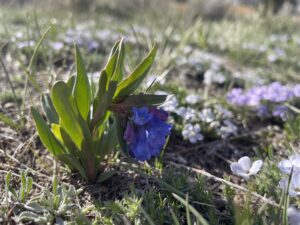
Bluebells (Mertensia oblongifolia)
Boraginaceae – Borage (Forget-Me-Not) Family

Spring Beauty (Claytonia lanceolata)
Portulacaceae – Purslane Family
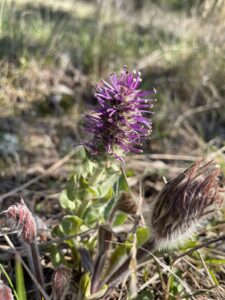
Wyoming Kittentails (Besseya wyomingensis)
Scrophulariaceae – Figwort Family

Pasqueflower (Pulsatilla patens)
Ranunculaceae – Buttercup Family
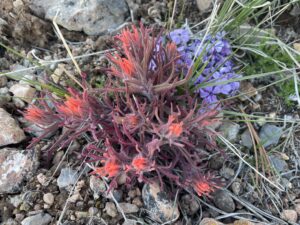
Desert paintbrush (Castilleja chromosa)
Scrophulariaceae – Figwort Family
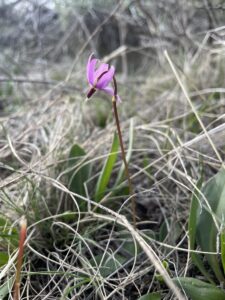
Shooting Star (Primula conjugens)
Primulaceae – Primrose Family
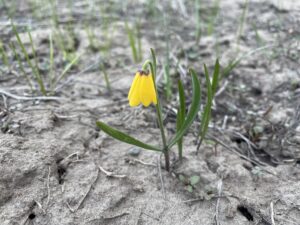
Yellow Bells (Fritillaria pudica)
Liliaceae – Lily Family
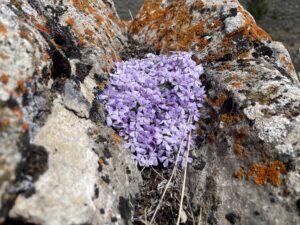
Hood’s Phlox (Phlox hoodii)
Polemoniaceae – Phlox Family

Desert Parsley (Lomatium foeniculaceum)
Apiaceae – Carrot Family

